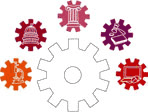
133rd Annual Meeting & Exposition
December 10-14, 2005
Philadelphia, PA

 Back to Annual Meeting Page
|
133rd Annual Meeting & Exposition December 10-14, 2005 Philadelphia, PA |

|
|
Timothy S. Naimi, MD, MPH1, Ernest E. Sullivent, MD1, Robert D. Brewer, MD, MSPH1, Jacqueline W. Miller, MD1, and Catherine A. Okoro2. (1) Division of Adult and Community Health, Centers for Disease Control and Prevention, 4770 Buford Highway, NE, Mailstop K-67, Atlanta, GA 30341, 770 488 5920, rdb2@cdc.gov, (2) Behavioral Surveillance Branch, Centers for Disease Control & Prevention, Mail Stop K-66, 1600 Clifton Road, Atlanta, GA 30333
Background: Binge drinking (drinking 5+ drinks) accounts for half of the 75,000 annual U.S. deaths from excessive drinking. Little is known about which alcoholic beverages are typically consumed by binge drinkers. This knowledge could guide prevention efforts, especially since beer, wine, and liquor are taxed and marketed differently.
Methods: We analyzed 2003 data from 7,090 adults in 13 states using the Behavioral Risk Factor Surveillance System binge drinking module. The predominant binge beverage was determined by the number of beverage-specific drinks consumed during respondents' most recent binge drinking episode.
Results: Beer accounted for 68%, liquor for 22%, and wine for 10% of binge drinks consumed. Among all binge drinkers, 75% drank predominantly beer. Beer was the predominant beverage among underage adults (81%), those drinking in public places (71%), those with ³3 binge episodes in the past month (81%), and those who drove a car within 2 hours of binge drinking (73%). Although persons drinking multiple beverage types consumed more (mean, 9.7 drinks) than those drinking a single beverage type (7.0 drinks, p<0.001), those drinking predominantly beer were more likely to consume an above-mean number of drinks compared to those drinking predominantly liquor or wine (OR 2.3, 95% CI 1.7,2.9)
Conclusions: Beer accounts for the majority of binge drinks consumed, and beer is the beverage of choice among those at highest risk of causing alcohol-related harms. Inflation-adjusted declines in beer taxes and relatively permissive marketing practices may account for some of these findings; interventions to reduce excessive beer drinking seem warranted.
Learning Objectives: At the end of the session, attendees should understand
Keywords: Alcohol Problems, Binge Drinking
Presenting author's disclosure statement:
I wish to disclose that I have NO financial interests or other relationship with the manufactures of commercial products, suppliers of commercial services or commercial supporters.
The 133rd Annual Meeting & Exposition (December 10-14, 2005) of APHA